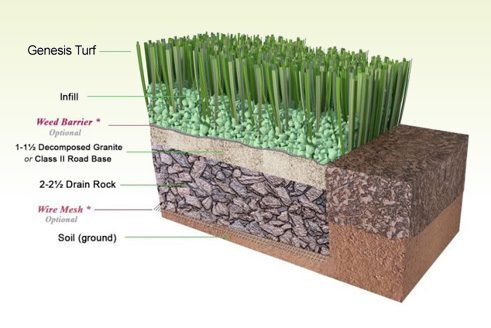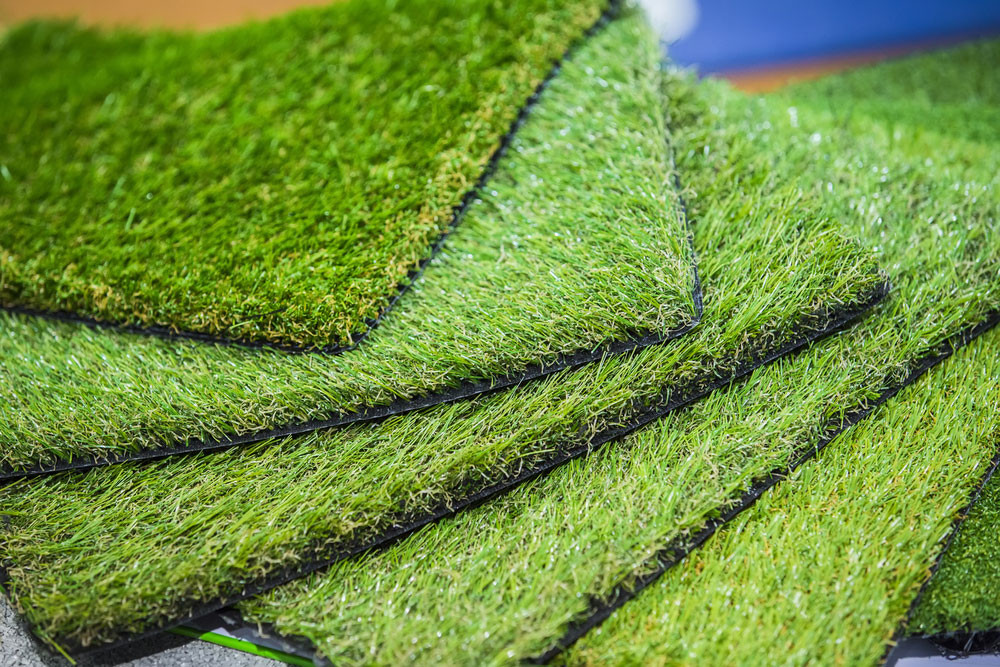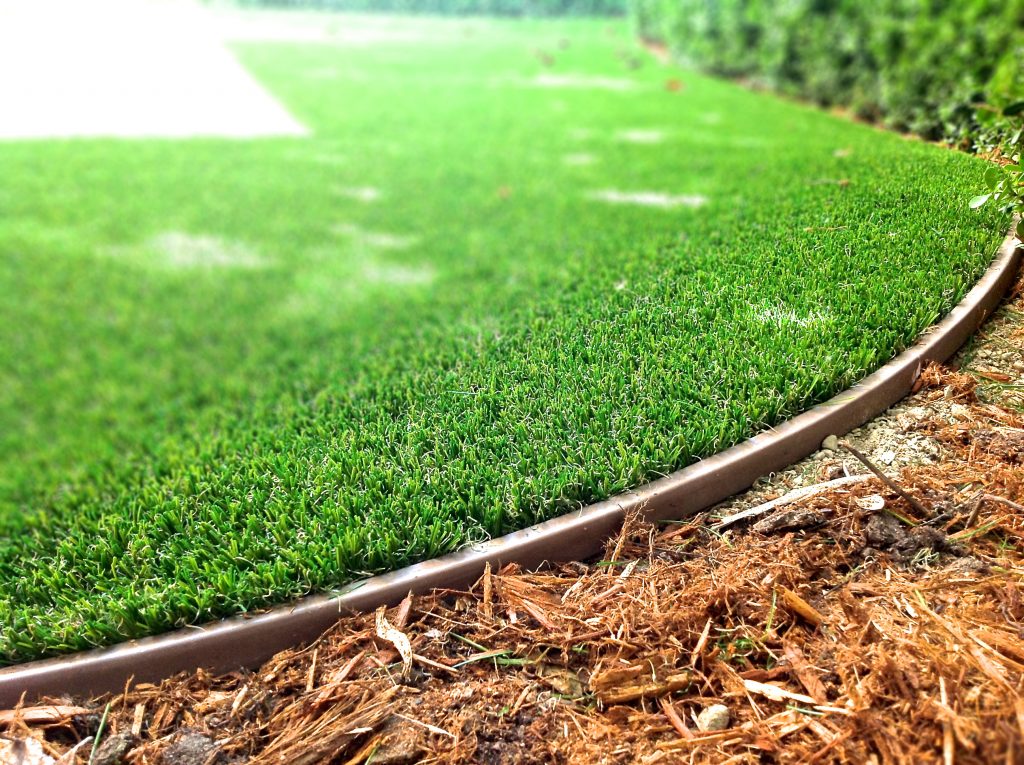Enjoy a Flawless Lawn with Arizona Artificial Turf for Any Outdoor Space
Enjoy a Flawless Lawn with Arizona Artificial Turf for Any Outdoor Space
Blog Article
See Why Homeowners Prefer Artificial Turf for Lasting Landscape Design Practices
As house owners significantly focus on sustainability in landscaping, synthetic grass has actually arised as a compelling alternative to typical grass. Its capability to conserve water, minimize upkeep efforts, and reduce environmental influence placements it as a sensible option for those seeking environmentally friendly services. Additionally, the aesthetic charm and adaptability of synthetic grass deal with diverse layout choices. However, the implications of this change extend past mere benefit and aesthetic appeals, triggering a closer assessment of just how these options influence more comprehensive ecological outcomes. What stays to be checked out is the full range of benefits that synthetic grass can offer to home owners and the environment alike.
Water Preservation Conveniences
One of the most substantial benefits of artificial lawn is its function in water conservation. In comparison, man-made turf eliminates this demand totally, as it does not need irrigation.
Additionally, the setup of synthetic grass can add to a more lasting landscape. House owners can substantially reduce their water expenses, enabling reallocation of resources to other environmental efforts or family usages. In addition, synthetic grass is created to stand up to numerous weather conditions without the demand for supplemental watering, making it a perfect option for areas encountering water shortage.
The environmental benefits extend beyond immediate water savings. By minimizing water usage, artificial turf aids to minimize the influences of environment modification, protecting important ecosystems that are intimidated by too much water removal. As lasting landscape design methods acquire grip, synthetic grass emerges as a liable option for property owners seeking to create environmentally friendly outdoor spaces.
Lowered Maintenance Initiatives
Synthetic grass substantially reduces maintenance initiatives contrasted to traditional yard lawns. With synthetic turf, homeowners can get rid of the time-consuming jobs related to natural landscaping, such as mowing, fertilizing, and weeding. This not just conserves useful time yet also lowers physical labor, making lawn care obtainable for individuals of every ages.
One of one of the most notable benefits is the absence of normal mowing. Typical lawns need regular cutting to keep a visually pleasing elevation, whereas synthetic grass continues to be continually rich without the requirement for cutting. In addition, house owners no much longer require to use plant foods or chemicals, which are usually required to keep natural yard healthy. This shift not just lightens the workload yet also advertises a neater, extra uniform appearance year-round.
Additionally, synthetic grass is durable and sturdy, requiring marginal upkeep past occasional brushing and rinsing to remove debris. This simplicity of upkeep enables home owners to appreciate their outdoor rooms without the continuous fear of upkeep, supplying more time for leisure and household tasks. Eventually, the decreased upkeep efforts connected with synthetic grass make it an appealing choice for those seeking a low-maintenance, aesthetically appealing landscape.

Environmental Impact Decrease
There is a growing recognition of the ecological benefits connected with synthetic grass, especially in regards to water conservation and minimized chemical usage. Typical yards call for substantial quantities of water, specifically in drought-prone regions, resulting in raised stress on local water resources. On the other hand, synthetic grass gets rid of the demand for irrigation, dramatically lowering water intake and promoting sustainability.
In addition, standard lawn maintenance typically entails the application of pesticides, plant foods, and herbicides, which can add to soil and water pollution. Man-made turf reduces this ecological risk by requiring marginal upkeep and virtually getting rid of the requirement for hazardous chemicals. This not just improves dirt health and wellness however also shields neighborhood communities from harmful drainage.
Furthermore, the production of natural yard yards usually involves the usage of fossil gas for mowing and landscape design equipment, more adding to greenhouse gas emissions. By selecting synthetic grass, homeowners can substantially reduce site their carbon footprint connected with lawn care activities.
Visual Appeal and Convenience
Along with its ecological advantages, synthetic grass offers considerable aesthetic allure and convenience for landscaping. Home owners can attain a rich, green appearance year-round, removing the seasonal fluctuations frequently linked with natural lawn. This consistent aesthetic not only improves the visual appeal of a building yet additionally adds to a well-kept and refined look.
Moreover, synthetic grass is readily available in a variety of colors, appearances, and styles, permitting personalization to fit individual preferences and layout themes - Arizona turf. Whether utilized in household yards, commercial spaces, or recreational areas, it can seamlessly integrate right into diverse landscape design layouts, from contemporary minimalist to rich tropical setups
The flexibility of synthetic turf prolongs past mere look; it can be mounted in numerous locations, consisting of rooftops, patio areas, and even interior rooms, creating possibilities for special landscape design remedies. In addition, it appropriates for a variety of tasks, from youngsters's backyard to pet-friendly settings, giving capability without endangering style.
Eventually, the aesthetic allure and flexibility of man-made turf make it an appealing choice for property owners looking for lasting landscape design options that do not give use this link up elegance for environmental duty.

Long-Term Price Savings
One of the most engaging benefits of artificial lawn is its possibility for lasting cost financial savings. Unlike natural lawn, which calls for routine maintenance-- including mowing, watering, feeding, and pest control-- artificial grass significantly reduces these recurring expenditures.
In addition, man-made turf has a lifespan of 15 to 25 years, depending upon its top quality and use. This sturdiness minimizes substitute costs, making it a more affordable choice in the future. The first financial investment in artificial grass can commonly be recovered via the savings accrued over time.
While the upfront expense may appear higher compared to sod setup, the collective savings from reduced upkeep and water use frequently outweigh these initial expenditures. Eventually, the fostering of synthetic grass not only advertises a sustainable landscape design remedy however likewise uses homeowners a financially smart choice that aligns with lasting budgeting objectives.
Conclusion
Fabricated grass emerges as a compelling alternative for lasting landscape design, using considerable advantages in water preservation, minimized maintenance initiatives, and lessened environmental impact. As areas progressively prioritize environmentally friendly techniques, the adoption of artificial lawn represents a progressive action toward attaining lasting and resilient landscapes.
Furthermore, artificial lawn is developed to withstand different climatic problems without the need for supplementary special info watering, making it a suitable choice for areas facing water deficiency. (Arizona artificial turf)

Fabricated lawn emerges as an engaging choice for sustainable landscape design, supplying considerable advantages in water preservation, minimized maintenance efforts, and lessened environmental impact.
Report this page